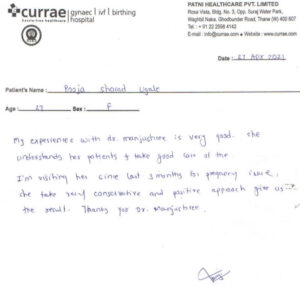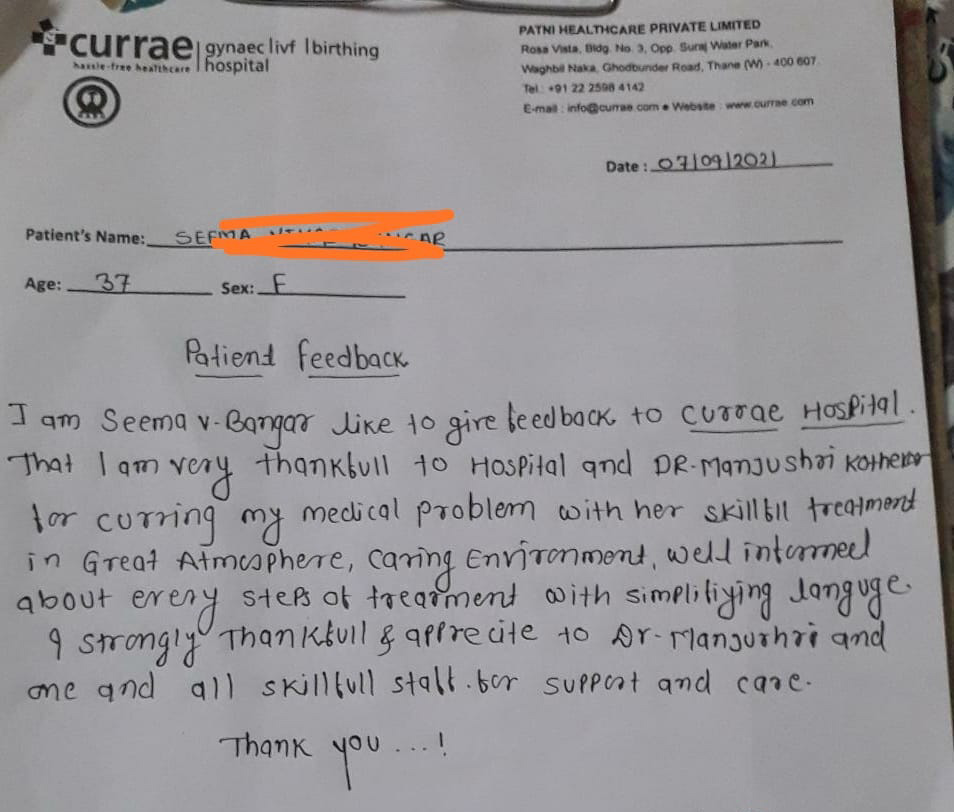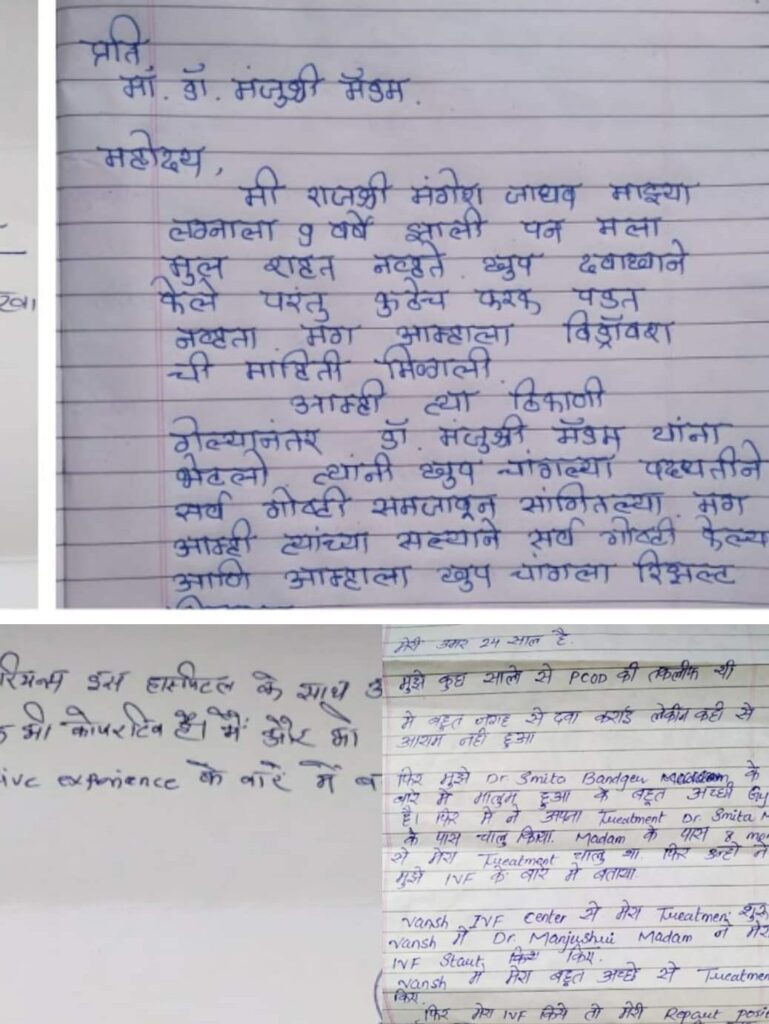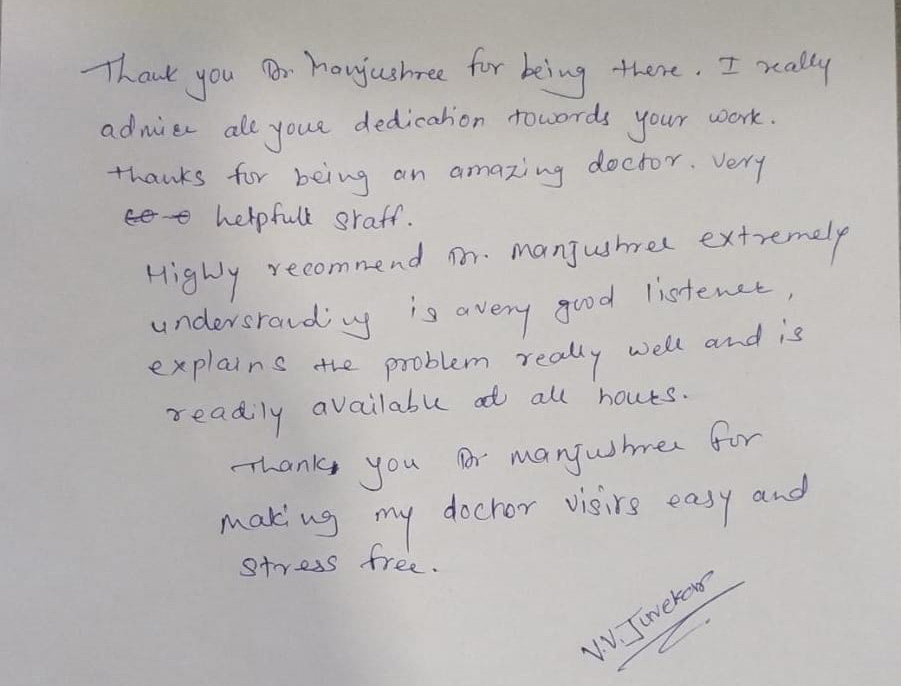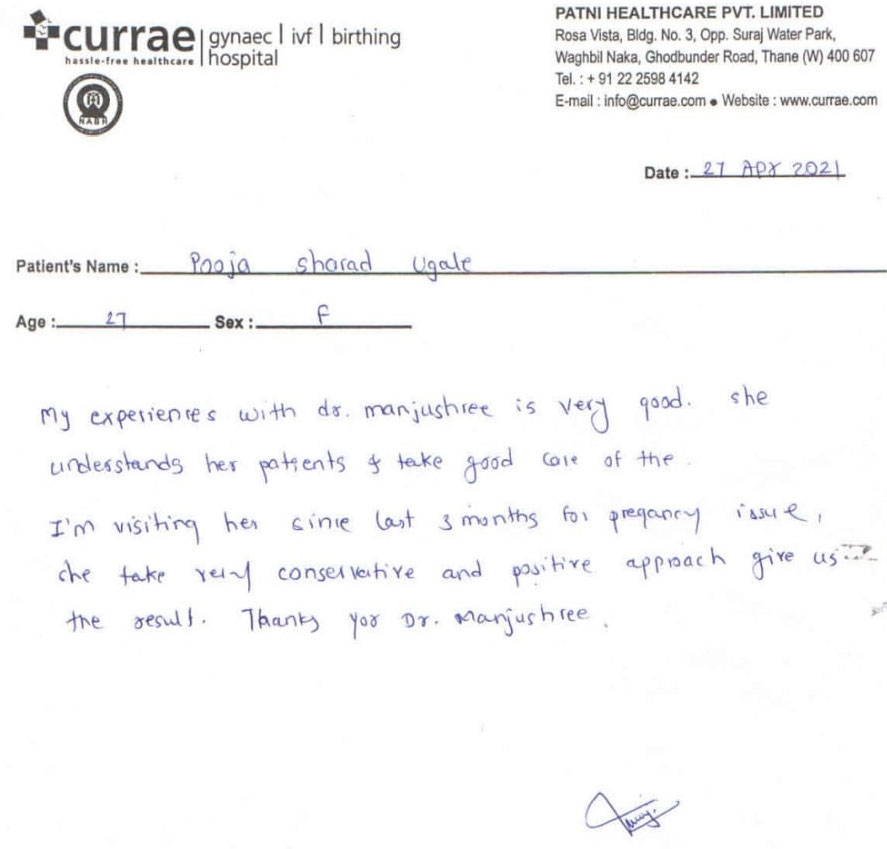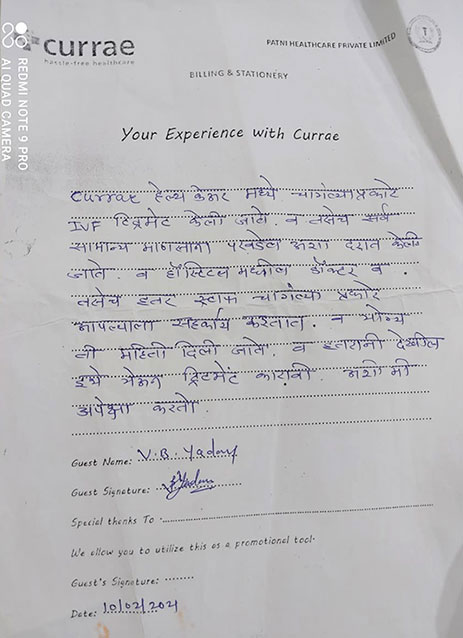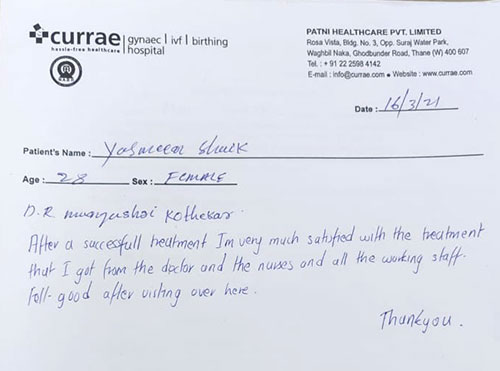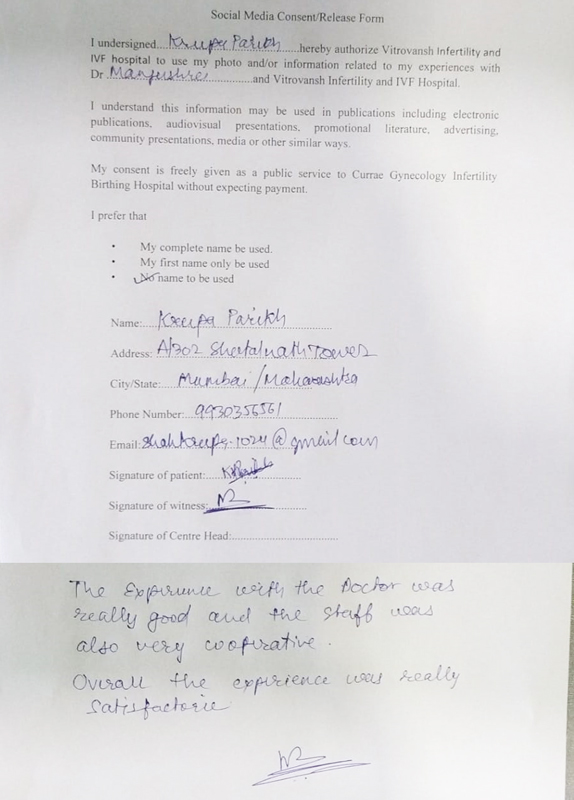IVF Specialist in Chembur, Mumbai
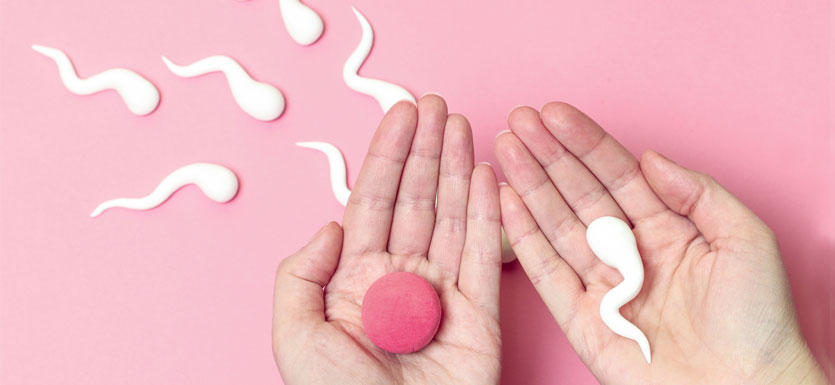
Vitro Fertilization is now an easier solution for infertility with the best IVF Specialist in Mumbai
Dr. Manjushri Kothekar, IVF specialist in Mumbai stands as a pillar of strength and compassion for those grappling with infertility for numerous couples facing the heart-wrenching challenge of infertility, the journey to parenthood can be a tumultuous and emotionally draining experience. The struggles, the dashed hopes, and the psychological toll of infertility can cast a shadow over their dreams of starting a family. The weight of unfulfilled longing, the silent battles fought against despair, and the relentless cycle of disappointment can take a heavy toll on their emotional well-being.
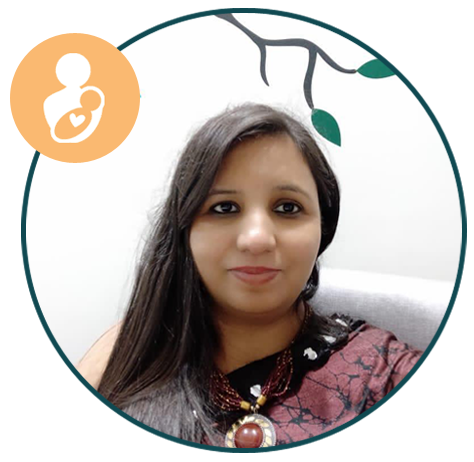
Dr. Manjushri Kothekar: IVF Specialist in Mumbai
Dr. Manjushri Kothekar, with her MBBS and MS in Obstetrics & Gynaecology, stands tall as a seasoned expert in the realm of IVF and infertility. Boasting over a decade of experience, she is a trailblazer in the field, renowned for her innovative treatment approaches and unwavering commitment to patient care.
The Ray of Hope at Chembur Fertility Clinic
Step into the realm of Chembur Fertility Clinic, a sanctuary of cutting-edge fertility services. Dr. Manjushri Kothekar’s expertise shines through a spectrum of treatments tailored to meet diverse needs:
- IUI Treatment: A ray of hope for couples seeking assisted conception.
- IVF & ICSI Treatment: Pioneering solutions for complex fertility challenges.
- Donor Egg Testing: Opening doors to alternative pathways to parenthood.
- PGT Testing: Ensuring the health and viability of embryos.
- Donor Sperm Treatment: Bridging the gap for those in need of donor sperm.
- Embryo Donation/Adoption: A pathway to fulfilling the dream of parenthood.
What are some common misconceptions about IVF:
Some common misconceptions about IVF include:
- IVF is always successful: While IVF is effective, there is no guarantee of success. Factors like age, health, and quality of eggs and sperm can impact the outcome.
- IVF is the only way to conceive with infertility: Other effective treatments like IUI or timed intercourse cycles can help patients conceive.
- IVF always results in twins or multiples: IVF itself doesn’t substantially increase the risk of multiples; transferring multiple embryos does. Recent advancements allow for safer single embryo transfers.
- IVF treatment and medication increase the risk of cancer: Studies show no significant increase in cancer risk due to IVF. Any increased risk in infertility patients is related to genetic factors, not IVF treatment.
- IVF is never successful at the first attempt: Success rates depend on various factors like age, egg and sperm quality, and overall health. Around 40% of IVF cases succeed in the first attempt.
What are the risks associated with IVF
The risks associated with IVF include:
- Complications during Pregnancy: IVF pregnancies can have a higher risk of conditions like hypertension, gestational diabetes mellitus, prematurity, and perinatal mortality.
- Multiple Births: IVF increases the chance of having twins or triplets, which can lead to various complications for both the mother and babies, such as premature birth, low birth weight, and increased risks of health problems for both the babies and the mother.
- Ovarian Hyperstimulation Syndrome (OHSS): This is a rare complication where the ovaries become enlarged and painful due to an excessive response to fertility medications. Severe cases can be dangerous and may require medical intervention.
- Ectopic Pregnancy: IVF slightly raises the risk of ectopic pregnancy, where the embryo implants in the fallopian tube instead of the uterus. This can cause pain and bleeding and requires immediate medical attention.
- Birth Defects: While the risk of birth defects in IVF babies is slightly higher than in the general population, most of this risk is due to factors like delayed conception and underlying infertility issues. Research is ongoing to understand the exact relationship between IVF and birth defects.
Reducing Risks in IVF with Dr. Manjushri Kothekar, IVF Specialist in Mumbai
- Personalized Treatment Plans: Dr. Manjushri Kothekar creates individualized treatment plans based on each patient’s specific needs and health conditions, minimizing the risks associated with generic approaches.
- Advanced Techniques: With over 12 years of experience and specialized training in IVF and Reproductive Medicine, Dr. Kothekar utilizes state-of-the-art techniques and technology to ensure the safest and most effective fertility treatments for her patients.
- Focus on Patient Safety: Dr. Kothekar prioritizes patient safety throughout the IVF process, from initial consultations to post-treatment care, reducing the chances of complications and ensuring a smooth and successful fertility journey.
- Emphasis on Single Embryo Transfer: By advocating for single embryo transfer when suitable, Dr. Manjushri Kothekar helps lower the risks associated with multiple pregnancies, such as premature birth and other complications, promoting healthier outcomes for both mother and baby.
- Comprehensive Care: Dr. Kothekar’s holistic approach to fertility treatment includes thorough monitoring, counseling, and support services, addressing not just the physical aspects but also the emotional well-being of her patients, thereby reducing the psychological stress often associated with infertility treatments.
Watch this video of Dr. Manjushri Kothekar to understand the “Reasons of IVF Success” on YouTube:
Understanding IVF Success Reasons | Dr. Manjushri Kothekar – IVF Specialist in Mumbai
Your Journey to Parenthood Begins Here
Are you in search of an IVF specialist in Mumbai who goes above and beyond to make your dreams a reality? Look no further than Dr. Manjushri Kothekar. With a compassionate approach and a wealth of experience, she is your trusted partner in the quest for parenthood.
Embracing the Future of Fertility
In a world where miracles happen every day, Dr. Manjushri Kothekar stands as a beacon of hope for those navigating the intricate landscape of infertility. With her expertise and dedication, she paves the way for countless individuals to embrace the joys of parenthood.
Reach out to Dr. Manjushri Kothekar, the leading IVF specialist in Mumbai, at Chembur Fertility Clinic. Your journey to parenthood begins with a simple phone call.
Call Us Now: 9769387593.

